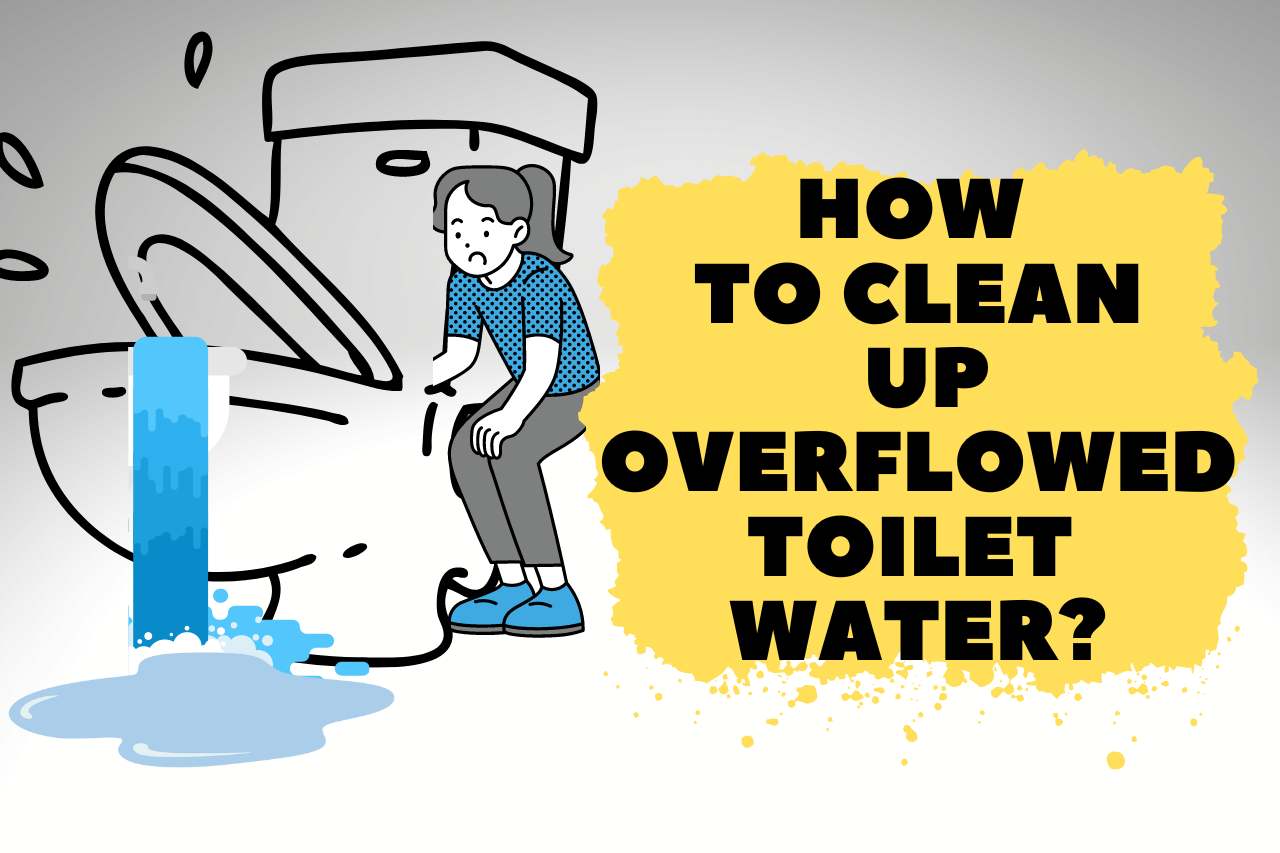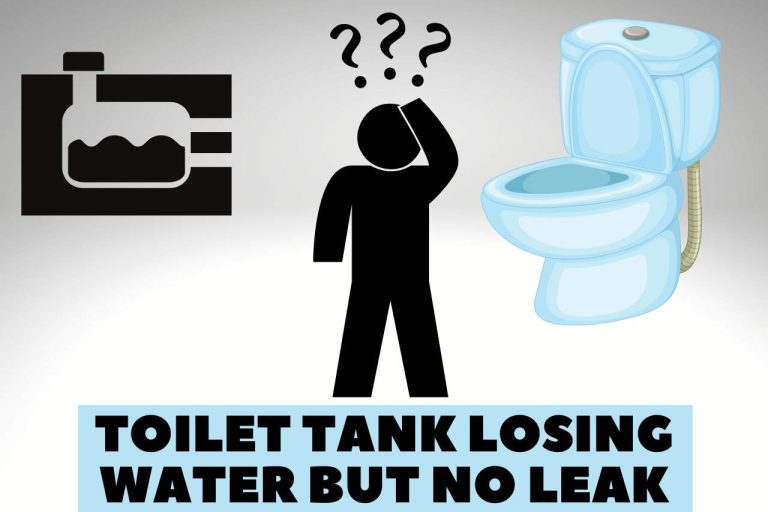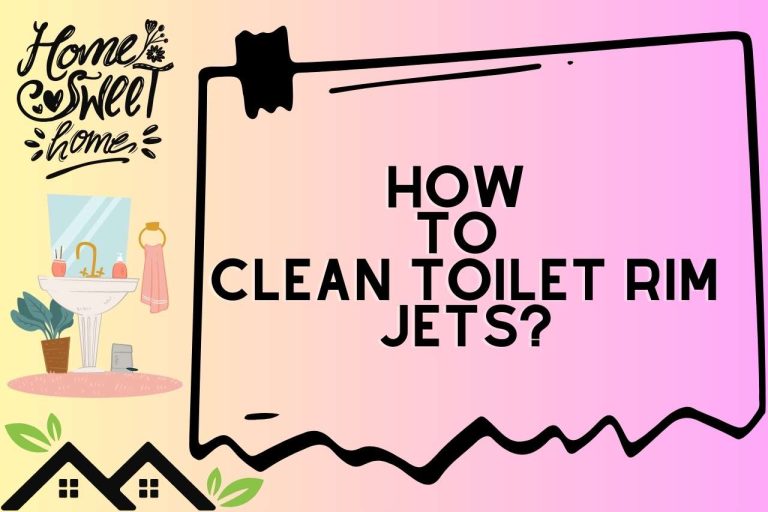How to Clean Up Overflowed Toilet Water? Clean It Up!!!
As the toilet is an appliance that we often use, it is not a surprise to have some issues with drainage of the toilet. So, the worst thing you can expect is an overflowing toilet. If it happens, there may not be an immediate DIY to prevent it yourself. Then, the terrible result will be a damp and messy bathroom along with a stench. Therefore, it is worth knowing how to clean up overflowing toilet water if you have to face such a case. Today we are going to explain to you the way you should clean it properly with some additional details in this regard. How to clean up overflowed toilet water? Let’s find out
Why does Toilet Water Overflow?
There are some most common causes for overflowing toilets. Check the list below.
- A Clog in the Drain – This issue can be seen widely due to the excessive use of toilet paper. The toilet paper clumps can clog in the drain line, so the water you flush will not go into the drainage. Then water overflows from the toilet bowl, making a mess. This might happen not only due to toilet paper but also other stuff such as napkins, feminine hygiene products, cotton, paper towel, etc. If you use the toilet to flush out other stuff, such as kitchen waste, and pet litter, the same thing might happen.
- Blockage in Plumbing Vent – Plumbing drain lines contain vents; they carry and release pent-up gases. At the same time, they carry fresh air to replace the air inside the vent. If some debris blocks the vent, its function is disturbed. This might damage the plumbing system, and you cannot flush the water properly, so the result will be an overflow.
- Filler Float is Set High – High filler float causes to fill the tank to excessive water. So, this time, water will overflow from the toilet tank, not the bowl.
These are major and common ones, but there also may be some other distinct issues with toilets, such as a problem with poor plumbing.
What are the Damages Overflowing Toilet Water Can Cause?
Although it seems that the only damage is the mess caused by the overflowing toilet, there are some other hidden risks.
- Spreading Bacteria – This is the most dangerous consequence. Sewage water contains some harmful bacteria, viruses, and protozoa. Therefore, if you are in direct contact with overflowing toilet water, it will be a treat to your good health.
- Growing Mold – Even though you mop and wipe the bathroom after overflowing, there is a chance to grow mold that came out with sewage water on the wood, wallpapers, drywalls, and some other porous surfaces. As a result, there will be cracks on baseboards and crevices nearby vanities and showers. This will also affect your health indirectly because respiratory problems and irritation of the skin can occur.
- Damaging the Inner Structure – There will be some noticeable damage to the flooring, electrical wiring, drywall, door trim, and so on because of the hidden moisture and water. Depending on the quantity of overflowed water, sometimes the damage may be serious, especially if overflowing happens from the upper floor toilet. To detect and reduce these kinds of damages, you will need help from a professional team.
How to Clean Up Overflowed Toilet Water?
If you will have to experience this unpleasant situation, here is what you should do in a protective way.
- Turn Off the Main Supply Line – Immediately turn off the main water supply line in your home. Or else it will be enough to turn off the shutoff valve. In case it takes some time to reach the main line, you can simply pull up the float, which is located in the toilet tank.
- Wear Protective Gloves and Boots – You do not want to come into contact with sewage water that contains bacteria. So do not skip this step. Before moving into the cleaning, wear gloves and boots.
- Use an Auger to Break the Clog – You will use an auger to quickly stop the overflowing water from the drain pipe. The tool navigates the s-shaped trap and unclogs the drainage to flow water in.
- Vacuum the Standing Water – Next, you have to use a wet or dry vacuum to suction up the water as much as you can from the floor. This will prevent damage to drywalls and cabinets.
- Absorb Remaining Moisture – After vacuuming, use some dry towels or old clothes to assimilate the remaining moisture. If the water spreads into the other rooms too, you should do the same for them.
- Dry the Toilet – Even though the overflowing water was fully absorbed, the procedure is not over. To prevent growing pests and mold, it is vital to dry the toilet and floor very well. Here it is highly recommended to use high-volume fans. If it is not available, use a regular fan, at least.
- Disinfect the Whole Area – To save your good health, disinfection is so important after an overflowing. Use some sanitary liquids you regularly use for the toilet and the bathroom, and clean the whole area, taking some time. Moreover, it is better to spray some disinfecting solution throughout the bathroom.
How to Get Rid of Smell After Toilet Overflowed?
The most unpleasant thing will be the smell for most of you rather than the damp mess. So, let’s see how to get rid of the stench. You will need a gallon of water and a cup of bleach in order to make a disinfecting solution that is able to neutralize the smell as well as kill harmful bacteria.
Next, Pour the solution into a spray bottle and spray it throughout the bathroom. It would be best if you wiped the surface after spraying. Sometimes, the stench that causes the sewage water will not quickly blow over, so you have to keep turning on the fans until the air becomes fresh. A few minutes later, you can use a fragrant air freshener if it is needed.
Conclusion
An overflowing toilet creates a huge mess all over the bathroom, but if you proceed according to the above-mentioned instructions, you will not have to spend money on an external cleaning service. However, your own safety is the number one, so do not be hurry; use protective clothes and tools during the cleaning. Last but not least, disinfection must be done as soon as possible.
Keep Reading: Similar Content You May Enjoy






